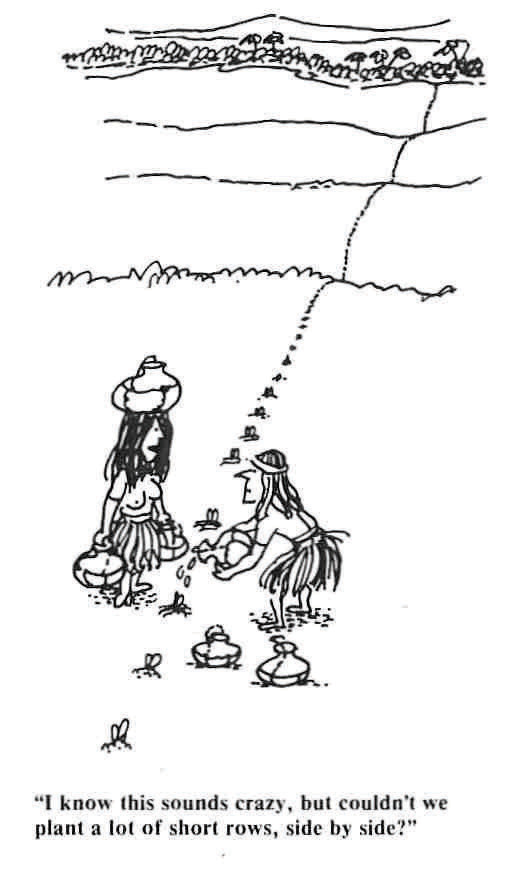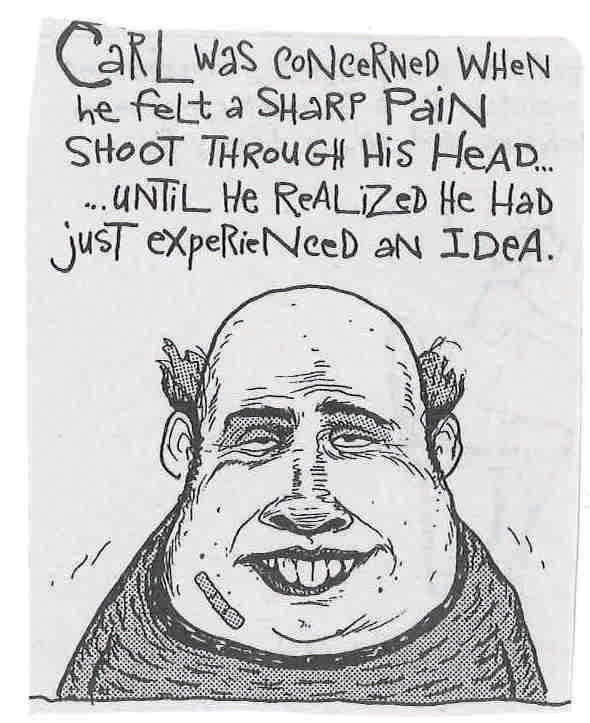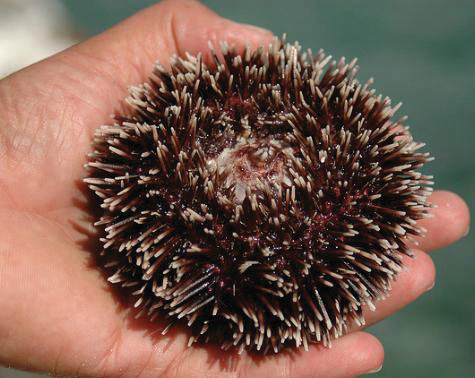This is “Effective Strategies for Group Creativity”, section 11.3 from the book An Introduction to Group Communication (v. 0.0). For details on it (including licensing), click here.
For more information on the source of this book, or why it is available for free, please see the project's home page. You can browse or download additional books there. To download a .zip file containing this book to use offline, simply click here.
11.3 Effective Strategies for Group Creativity
PLEASE NOTE: This book is currently in draft form; material is not final.
Learning Objectives
- Define and explain “bisociation.”
- Describe brainstorming and identify criteria for its effective use.
- Differentiate between neophiles and neophobes.
- Distinguish between the creative styles of “brooders” and “spawners.”

Sisters, brothers, mothers, fathers, teachers—everybody starts to douse your imagination and creativity. At a young age it starts, and then all of a sudden you’re like a trunk going through an airport, covered in stickers. I think I have spent most of my life pulling off stickers.
Kim Basinger
Very few people do anything creative after the age of thirty-five. The reason is that very few people do anything creative before the age of thirty-five.
Joel Hildebrand
You can’t wait for inspiration. You have to go after it with a club.
Jack London
Human beings are naturally creative from an early age. Think of any four- or five-year-old child you’ve ever met, and you can verify this for yourself. Here are some examples from journals kept by one of the authors concerning his children’s development before age six:
I was reading Animal Farm the other day and mentioned that one of the “Seven Commandments” of the animals had to do with the beliefs that the beasts liked anything with four legs or wings. Amelia said, “Oh—then they like airplanes!”
Last night at dinner, Claire looked at the roll-top wooden bread storage compartment over the counter top in our kitchen and said, “That’s a garage door where food parks.”
When I was explaining that there are only four tastes which human tongues can detect—salty, sweet, sour, and bitter—Claire asked, “What about ‘yucky’?”
Last night on the way to folk-dancing, we started talking about vocabulary. For some reason, Amelia created a new word: “trampede.” According to her, a “trampede” is a centipede on a trampoline.
Solving problems and making decisions both work best if people in a group are creative; i.e., if they entertain new perspectives and generate new ideas. Can this be a simple matter of having the group’s leader tell people “Be creative,” though? Probably not. It’s like saying, “Don’t think of an elephant”: it’s apt to produce just the opposite effect of the command itself. Still, tools and techniques for encouraging creativity in a group do exist.

A Theory of Creativity
Arthur Koestler, a major intellectual and political force in Europe and the United States throughout most of the 20th century, contended that all creativity comprises a process he called “bisociationAccording to Arthur Koestler, the essence of the creative process, whereby previously unconnected ideas fuse into something new..”Koestler, A. (1964). The act of creation. New York: Macmillan. Koestler’s seminal book on this topic, titled The Act of Creation, put forth a theory that he believed accounted for people’s “Aha” reaction of scientific discovery, their “Ha-ha” reaction to jokes, and their “Ah” reaction of mystical or religious insight.
Above all, creativity creates new things—things that weren’t there before the creative act took place. In every kind of creative situation, according to Koestler, the result is produced by a meeting of lines of thought that bring together hitherto unconnected ideas and fuse them into something new. If the lines of thought concern devotional matters, mystical insight emerges, and when they concern more mundane matters the result is apt to be a joke. If they are scientific, the result is a scientific discovery.
The expression “to think outside the box” is often used to refer to creativity. Koestler’s view seems to be that creativity consists, instead, of linking existing but separate “boxes” together. One implication of his theory is that, to be creative, a person not only needs to depart from the status quo(Latin) things as they are at a given time; existing conditions. but also needs to be familiar and comfortable with a range of alternatives from a wide variety of fields. Koestler’s perspective would seem to be consistent with the association we often make between creativity on the one hand and intelligence and breadth of knowledge on the other.
Overcoming Inertia
At every crossroads on the path that leads to the future, tradition has placed 10,000 men to guard the past.
Maurice Maeterlinck
When you cannot make up your mind which of two evenly balanced courses of action you should take, choose the bolder.
William Joseph Slim
Groups generally comprise a mixture of people when it comes to openness to change. A small fraction of the members may position themselves at one end of the openness continuum or the other. Some of these people, called neophilesIndividuals who tend to accept, embrace, or seek new things., will eagerly embrace almost anything novel. Others, known as neophobesIndividuals who tend to avoid or oppose new things., will invariably shun what’s new and prefer the security of what they know and have done in the past. The majority of people, however, probably don’t fit neatly into either of these categories. Instead, they may prefer to produce or experiment with new things under certain circumstances and resist them under others.
It’s rarely possible to provoke creativity on the part of an entire group all at once. You needn’t agree with Thomas Fuller’s aphorism that “a conservative believes nothing should be done for the first time” to realize that some people in groups will hold onto what they’re familiar with all the more stubbornly as others begin to waver and experiment with something new.
Brainstorming
In regard to every problem that arises, there are counselors who say, “Do nothing” [and] other counselors who say, “Do everything”…I say to you: “Do something”; and when you have done something, if it works, do it some more; and if it does not work, then do something else.
Franklin Delano Roosevelt
One familiar technique that experts in the realm of creative thinking have long recommended is brainstormingA group decision-making tool in which members generate as many creative ideas as possible before assessing them.. Alex Osborn, an advertising executive, began using the term in the mid-1950s and described the method in detail in his book Applied Imagination: Principles and Procedures of Creative Problem Solving.Osborn, A.F. (1963) Applied imagination: Principles and procedures of creative problem solving (3rd revised ed.). New York: Charles Scribner’s Sons.
One criterion of proper brainstorming is that it must begin with an unrestricted search for quantity and creativity rather than quality. It should actually solicit and reward craziness and zaniness, in other words.
A second criterion for good brainstorming is that it should encourage and praise “piggybacking” on ideas which have already emerged. A third is that brainstormers should avoid making any judgments until they’ve generated an extensive list of ideas.
Robert Sutton, a respected organizational consultant, published a book in 2002 called Weird Ideas That Work.Sutton, R. (2002). Weird ideas that work. New York: Free Press. Among other things, Sutton’s book paid tribute to brainstorming.
One of Sutton’s central contentions was that excellence arises from “a range of differences”—precisely what brainstorming aims to generate. To illustrate, Sutton declared that such prodigious geniuses as Shakespeare, Einstein, Mozart, Edison, and Picasso were first and foremost productive. In fact, he argued that these brilliant individuals didn’t succeed at a higher rate than anyone else; they just did more.
Mozart, for instance, started composing when he was seven years old and wrote at least 20 pieces of music per year from then until his death at the age of 35. Several of his compositions were routine or even dull, but many were sublime and some are unquestioned masterpieces.
Closer to home, Sutton noted that today’s toy business offers examples of the value of starting with lots of ideas and only then selecting quality ones. Skyline, an arm of California’s IDEO Corporation, employed just 10 staff members in 1998 but generated 4,000 ideas in that year for new toys.
According to Sutton, those 4,000 ideas boiled down to 230 possibilities worth examining through careful drawings or working prototypes. Of the 230 concepts, 12 were ultimately sold. In other words, the “yield” of saleable products came to only 3/10 of one per cent of the original ideas. Sutton quoted Skyline’s founder, Brendan Boyle, as saying, “You can’t get any good new ideas without having a lot of dumb, lousy, and crazy ones.”
The Ostrich and the Sea Urchin
Now let’s take a look at what two animals have to do with ideas in general, and with varied ways of being creative about ideas in specific. The two animals are the ostrich and the sea urchin.
The ostrich’s reproductive processes lies at one end of a continuum, the sea urchin’s at the other. Like the 350-pound mother which lays it, an ostrich egg is large, imposing, and tough. For 42 days after it’s laid, it grows until it weighs more than three pounds. It will then reliably crack open and release a baby ostrich. Unless something highly unexpected happens, its mother will tend it well, and that single baby ostrich will in turn grow up and become a mature ostrich.
A sea urchin differs in almost every respect from an ostrich. The whole animal takes up less space and weighs less than an ostrich egg, for one thing. It has no eyes. It hardly moves all its life. To propagate, an urchin spews a cloud of more than a million miniscule eggs into the ocean. The eggs disperse immediately into the tide pools and reef inlets populated by their spiny parents.
Some of the sea urchin eggs meet sea urchin sperm and combine to form tiny, transparent, free-floating embryos. Eggs remain viable for only 6–8 hours, however, so lots of them die before this happens. Of a one-million-egg cloud, those which are to have a chance of becoming embryos must do so within 48 hours. The odds aren’t good.
Then things thin out even more. A Stanford University publication points out that “the young embryo is totally at the mercy of the sea. There are many organisms that will consume the young sea urchin embryo and later the young sea urchin.”Brooders vs spawners. http://www.stanford.edu/group/Urchin/bvss.htm In other words, the overwhelming majority of sea urchin eggs die of loneliness or get eaten.
Biologists call animals like ostriches “brooders” because they create only a few offspring but take care of each one faithfully. Creatures such as sea urchins, which produce vast numbers of candidates for fertilization but don’t take care of them and lose most of them to predators, are called “spawners.” Brainstorming is clearly a “spawning” process rather than a “brooding” one.
Threats to the Effectiveness of Brainstorming
Although it is meant to generate large quantities of ideas on which to base sound decision-making, brainstorming entails some same challenges. One group of researchersStroebe, W., Diehl, M., & Abakoumkin, G. (1992). The illusion of group effectivity. Personality and Social Psychology Bulletin 18 (5): 643–650. identified three potential weakening factors inherent within brainstorming:
- BlockingAn unintentional reduction in other group members’ contributions to brainstorming caused by one member’s use of time to express him/herself.. Since only one person at a time in a group can speak, other members may lose the desire to contribute their own ideas or even forget those ideas in the midst of a lively brainstorming session.
- Social matchingThe tendency of members to contribute to a group’s discussions at the same level as their fellow members..Brown, V., & Paulus, P. B. (1996). A simple dynamic model of social factors in group brainstorming. Small Group Research, 27, 91–114. People in a group tend to calibrate their own degree of contribution to its activities on the basis of what the other members do. If someone has lots of ideas but sees that the rest of the group is less productive, that person is apt to reduce his or her own creative production.
- Illusion of group productivityThe tendency of members to rate the quality of their groups’ outputs as higher than they really are.. Group members are apt to rate the level of their output as being higher than it actually is. For one thing, members describe their group as being above average in productivity with respect to other groups. They also overrate their individual contributions; people in one study, for instance, said that they had contributed 36% of their group’s ideas when in fact they had offered only 25%.Paulus, P. B., Dzindolet, M. T., Poletes, G., & Camacho, L. M. (1993). Perception of performance in group brainstorming: The illusion of group productivity. Journal of Personality and Social Psychology, 64 (4), 575–586.
Key Takeaways
- Creativity, which can play a positive role in group decision-making, has been described as a process of combining two disparate elements. It can be stimulated through brainstorming.
Exercises
- Do you agree with Arthur Koestler that all creativity involves bringing disparate trains of thought together? Provide 2–3 examples which support your answer.
- Do you consider yourself a “brooder” or a “spawner”? Explain your response to a fellow student, providing examples which support your answer.
- When was the last time you showed exceptional creativity? What factors in your environment or within you at the time contributed most to that creativity?
- Think of a neophile and a neophobe whom you’ve encountered in a group. Describe actions that each person took which illustrate his/her neophilia or neophobia.






